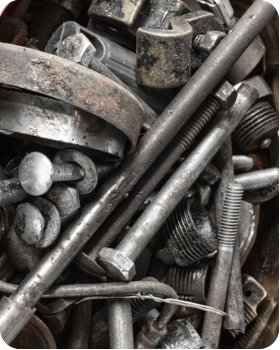Steel (Iron)
Iron, or as it is commonly called, steel, has one of the highest recycling rates in the world and as it does not degrade in the process it can be recycled indefinitely. Recycling scrap iron uses only 75% of the energy required to smelt iron ore.
What happens when it’s recycled?
Ferrous metals are metals that contain iron, including wrought iron, cast iron, steel and stainless steel. Common sources include old cars, household appliances, steel beams, railroad tracks, ships, food tins, bottle tops, paint cans and aerosols.
The scrap is fed into large shredders or crushers, which break the scrap into smaller pieces. Steel and iron is then easily separated from non-ferrous scrap because it’s highly magnetic. Pieces of steel scrap are chemically analysed to determine their alloy composition, and sorted by type. Scraps are then melted down for reuse in the production of new iron and steel products.
Why Recycle?
Recycling ferrous metals has many financial and environmental benefits. It diverts them from landfill, reduces the need to extract and manufacture raw materials and contributes to significant savings in greenhouse gas emissions. Recycling steel, for example, uses 75% less energy than making steel from raw materials.
All types of steel are 100% recyclable and can be recycled an infinite amount of times.


